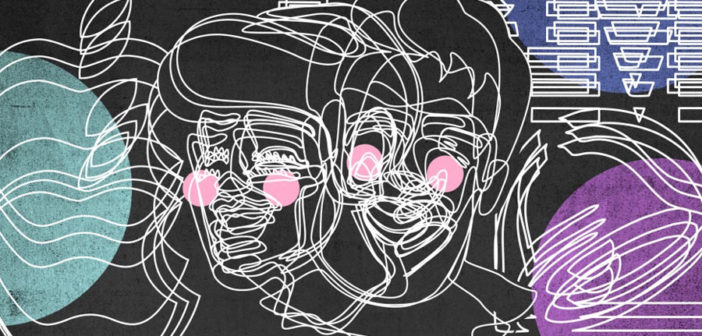Even the world’s most buttoned-up companies are incorporating yuks into their branding, and for a simple reason: Comedy pays.
Once upon a time, the world’s most buttoned-up company, IBM, ran an ad that showed Santa searching a database for good children. The New York Times ran a piece about the ad as a symbol of one of the great turnaround stories of modern business, proof that–in the words of then CEO Lou Gerstner–elephants could dance. Over the next year, IBM’s stock price rose 136%. I wrote that ad, and I never forgot the lesson it taught me: Being funny can make you money.
Now, decades later, my consulting firm uses artificial intelligence to measure people’s sense of humor, among other things. Our analysis shows that there are eight different kinds of humor: parody, dark, toilet, surreal, satire, slapstick, deadpan, and self-deprecation. Not all of them appeal to all people, but when you find the right fit for your audience, you can turn your brand around.
Take Taco Bell. Eight years ago, it was Taco Hell. Now it’s a go-to destination for a generation of restaurant goers. Some of that can be attributed to the surreal sense of humor it’s developed on social media that is spot on for the deep-fried memes crowd:
. @TacoBell GOD DAMMIT TACO BELL I LOVE YOU SO MUCH.
— STOP THE ILLUMINATI (@Illuminati_Stop) February 18, 2013
When Jaguar launched its F-Type, it needed to persuade the world to rethink its “smug dad in the golf club” image. It did it with more than sex on wheels: It made the first-ever funny ad for a luxury car. Sophisticated consumers like deadpan humor–it’s the confidence of understatement–and Jag nailed it with this:
And then there are airline safety videos. Remember when you didn’t watch them, before they became a whole kaleidoscope of surreal humor, parody, and slapstick? Now they’re often the most entertaining part of the flight. Here’s a Lord of the Rings parody for Air New Zealand:
Here’s Michael Caine and co. doing self-deprecating humor for British Airways:
And here’s Delta, being surreal with memes of yesteryear:
It’s the same life-or-death information: Buckle up, put on your own oxygen mask before helping others. Now it’s finally become more compelling than getting the last juice out of Twitter before the cabin crew makes you turn your phone off. And that’s the critical thing. Whatever you’re trying to communicate now, whether it’s an internal email or a million-dollar ad, you’re competing with the most compelling content machine of all time, sitting in somebody’s pocket. So it’s more critical than ever to know your audience, and understand what gets them to crease up.
Even Apple, perhaps the most buttoned-up company of our current decade, has gotten in on the act:
Self-deprecating humor, parody, and slapstick all in under a minute. Trust Apple to pack a lot into a small package.
Of course, humor can go horribly wrong. I once asked a standup comedian friend what the worst heckle of his life was. He said one of his jokes was greeted with complete silence, and then he just heard somebody say, “Poor guy.” When you strike a duff note, everybody’s toes curl. Case in point:
Some festive date rape humour from @Bloomingdales' Christmas ad campaign pic.twitter.com/0AYDvuytfG
— Siobhán Fenton (@SiobhanFenton) November 11, 2015
Dark humor, in particular, is hard to get right. Your audience and your company might love it, but it’s risky. Ogilvy India created an ad where Malala Yousafzai is shot by the Taliban but bounces back thanks to a Kurl-On Mattress. If you need an AI to tell you why this should never have happened, you’re beyond help, my friend.
So: how does a large corporation find its funny? Ask any comedian: Your humor must be true to who you are. It’s called finding your voice. Here’s how:
- Ask colleagues about the last funny thing they shared, what their favorite comedy show is, and who their favorite comedian is. Ask them to categorize it.
- Find examples of those eight kinds of humor. Force people to pick their most and least favorite. No, they can’t choose two.
- Ask senior management. Ask your colleagues who deal with customers every day: salespeople, call center operators, drivers, and checkout staff. Compare and contrast.
- The categories with the most votes are your company’s (or your team’s) collective sense of funny.
Now think about the comedians or writers who are geniuses of that genre. If your company is deadpan, how would Larry David speak about it? If your humor is satirical, how would Michelle Wolf handle it?
The internet has changed the rules of branding and marketing–companies used to have a single tone of voice. Now the most successful ones have multifaceted personalities. All the more reason to crack a smile now and then.
–
This article first appeared in www.fastcompany.com
Seeking to build and grow your brand using the force of consumer insight, strategic foresight, creative disruption and technology prowess? Talk to us at +9714 3867728 or mail: info@groupisd.com or visit www.groupisd.com


